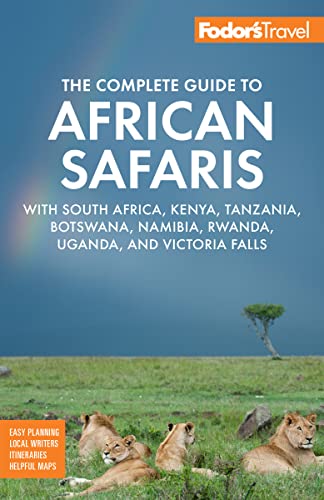The most striking thing about Nairobi National Park, Kenya's oldest national park, isn’t a mountain or a lake but the very fact that it exists at all. This sliver of unspoiled Africa survives on the edge of a city of more than 3 million people. Where else can you get a photo of animals in their natural habitat with skyscrapers in the background? As you travel into the city from Jomo Kenyatta International Airport, you're likely to see hartebeests grazing near the highway.
The park is tiny compared with Kenya's other game parks and reserves; it covers only 117 square km (44 square miles). It's characterized by open plains that slope gently from west to east and rocky ridges that are covered with rich vegetation. Seasonal streams run southeast into the Mbagathi Athi River, which is lined with yellow-color fever and acacia trees. In the west the river runs through a deep gorge where rocky outcrops are the favored habitat of leopards.
Fences separate the park from the nearby communities of Langata and Karen, but they don’t always prevent the occasional leopard or lion from snacking on a dog or horse. This is because of an open corridor to the south that allows wildebeests and other animals to move to other areas in search of food; researchers believe the annual migration in this area was once as spectacular as that in the Serengeti.
Despite the urban pressures, the park contains a good variety of wildlife, especially during the dry season. Animals migrate here from other areas knowing that there's always a source of permanent water. You can see the Big Five, minus elephants as the area isn’t big enough to support them. If you want to see baby elephants, visit the David Sheldrick Elephant Orphanage close to the main entrance of the park. Zebras, elands, impalas, and Grant's and Thomson's gazelles are well represented. Warthogs and ostriches are common on the open plains. Larger game includes Masai giraffes, which browse in the woodland, and a breeding population of about 40 black rhinos, sometimes found in the light bush around the forest area. Black rhinos have been particularly successful here because it’s been easier to keep track of and control poachers. In the extreme western border of the park, a low ridge covered by a stand of hardwood trees is home to herds of bushbucks and impalas as well as some of the park's olive baboons. Impala Point, at the edge of the ridge, makes a good vantage point to scan the plains with binoculars for concentrations of game.
Predators include a healthy population of lions, and you have an excellent chance of seeing a lion kill. Rangers keep a careful note of the movements of the larger animals, so it’s worth asking at the gate where to look for lions or rhinos.
More than 500 species of permanent and migratory birds have been spotted in the park. Around the dams used to create marshes you’ll find Egyptian geese, crowned cranes, yellow and saddle-billed storks, herons, African spoonbills, sacred ibis, hammerkops, Kittlitz's sand plovers, and marabou storks. In the plains look for secretary birds, vultures, helmeted guinea fowls, bustards, yellow-throated sand grouse, larks, pipits, and Jackson's widow birds, which display their long tails and attractive plumage during the long rains in May and June. The forests hold cuckoo shrikes, sunbirds, waxbills, flycatchers, and warblers.






